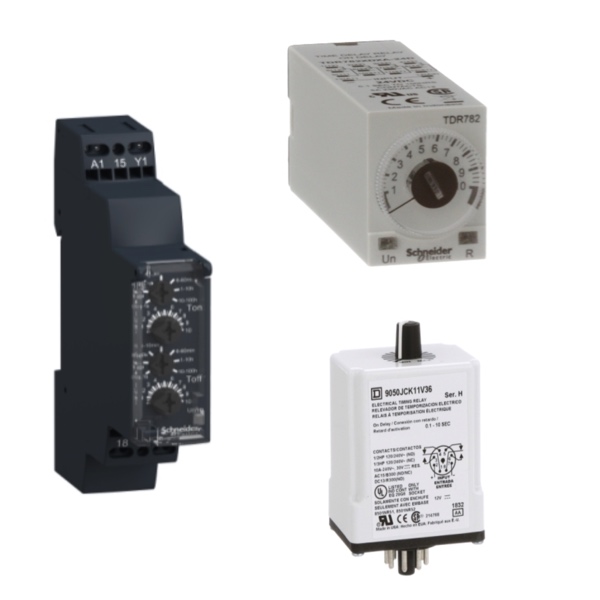Square D Schneider Electric Time Delay Relays

Time delay relays are used in industrial applications that require time-delayed switching, such as starting a motor or controlling a load. In a standard control relay, contacts close immediately when voltage is applied to a coil, and open immediately when voltage is removed. In some applications, it is desirable to have the operation of the contacts delayed following voltage being applied or removed. On-delay timers begin when voltage is applied. When the time has expired, the contacts close and remain closed until the voltage is removed from the coil. If the voltage is removed before time-out, the time delay resets. When using off-delay timers, nothing happens when voltage is applied. Closing the control input causes the contacts to transfer. Opening the control input causes time to begin and the contacts remain closed. On time-out, the contacts transfer. Closing the control input prior to time-out causes timing to reset. Removing voltage prior to time-out resets the timing and opens the contacts.
More Information about Square D Time Delay Relays
Schneider Electric Harmony timer relays are designed to time events in industrial automation systems by opening and closing contacts before, during or after a set period of time. They are specifically designed for hard-wired logic automated systems to complement the functions of industrial PLCs. The wide range of timer relays with different timing functions, wiring options and mounting options are suitable for a wide range of applications including: buildings, machines, HVAC and water facilities.
Time Delay Relay Basics
ON Delay Relays
When the coil in a normal relay is energized, the contacts are instantly closed, allowing the current to pass through. When the coil in an ON delay relay is energized, the contacts are delayed for a given period of time, before they close. A common use for an ON delay relay is to reduce the inrush current when powering on several devices at once. The ON delay relay can power on one device slightly later than another device. This can prevent too much inrush current that might blow a fuse or trip a breaker in an electrical circuit.
OFF Delay Relays
OFF delay relays are similar to ON delay relays, however, the delay occurs when the coil is de-energized. When the coil is energized, the contacts instantly close. When the coil is de-energized, there is a delay before the contacts open. A common use for OFF delay relays is when using motors with fans. When the motor is turned off, an OFF delay relay allows the fan to continue cooling the motor for a given period of time before turning off.

